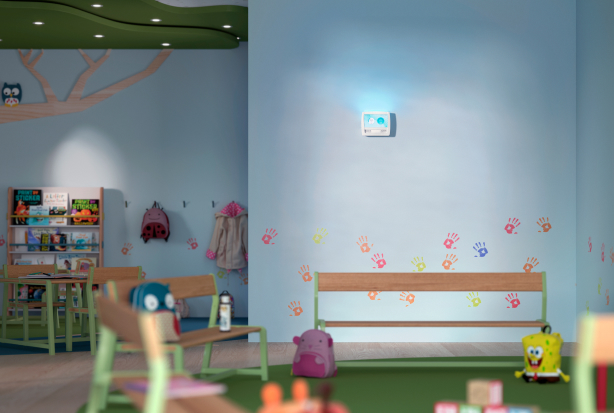


Day care centres must be able to welcome babies and young children in absolute safety.Indoor air quality monitoring has been, moreover, mandatory since January 1st, 2018, in France in Establishments Receiving the Public (ERP) such as welcoming children under the age of 6. NatéoSanté offers you CO2 detectors as well as a complete range of professional air purifiers for all areas of your nursery.
Go further in improving the indoor air quality breathed daily both by the very young and nursery staff.


Children spend 90% of their time indoors (home, nursery, transport, etc.). It should be noted that indoor air is 8 to 10 times more polluted than outdoor air. 40% of environmentally related diseases affect children under five years old.
Poor air quality is the cause of many symptoms (fatigue, headaches, eye, nose and throat irritations, hyperactivity, respiratory allergies, etc.) that are found in children but also in nursery staff.
Protect everyone’s health by ridding your nursery of indoor air pollutants.



Indoor air in day care centres and nurseries can contain a multitude of pollutants, whether organic, chemical or gaseous in origin. This indoor air pollution is inhaled daily by young children and staff. These contaminants mainly come from building materials, new furniture, cleaning products and activities carried out with the children, etc.

Benzene concentration
divided by 7*
Formaldehyde concentration
divided by 5*
Real-time air quality measurement:
VOCs and PM2.5




